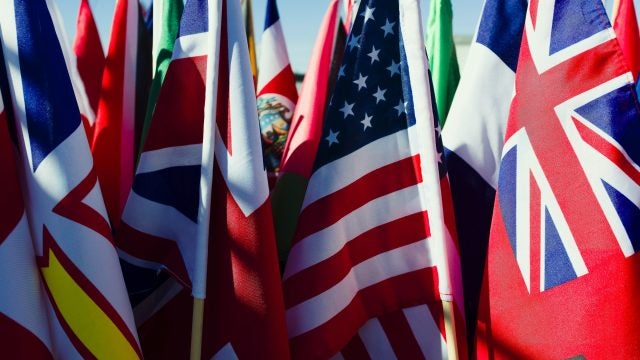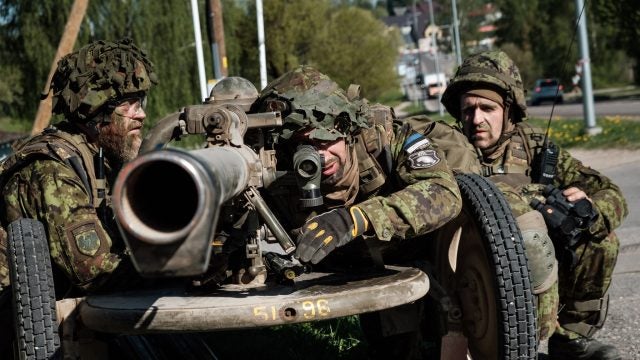
Title: NATO, the Russian Invasion of Ukraine, and the 2022 Strategic Concept
In the wake of Russia’s invasion of Ukraine, the North Atlantic Treaty Organization (NATO) accepted hard realities and made significant changes with its release of the 2022 Strategic Concept. However, depleted weapons stocks, years of underinvestment in military assets, energy vulnerabilities, the U.S. rebalance to the Indo-Pacific and security and technological competition with China, and questions about NATO’s identity could undermine alliance cohesion and collective defense. NATO members must increase expenditures in military equipment and R&D, develop a more resilient and flexible industrial military base, increase investments in advanced technologies especially artificial intelligence, and clearly define the meaning of collective defense as the U.S. confront China. If NATO does not make regular policy adjustments to its strategic orientation, then it could struggle to adapt as pressure points mount.
The 2022 Strategic Concept
The Russian invasion of Ukraine forced NATO to update its core tasks with a new Strategic Concept more attuned to the modern threat environment. NATO members adopted a new deterrence approach and agreed to mitigate security risks posed by China, malign actor interference, hybrid war, intensified technopolar competition, the China-Russia “no limits” partnership, and transnational threats like terrorism and climate change. Not only is NATO committed to reassuring alliance members in the East vulnerable to Russian aggression— especially Poland and the Baltic States—but it also adopted a contemporary understanding of conventional threats on battlefields and hybrid and transnational threats in battlespaces.
One of NATO’s first responses to the Russian invasion was to adopt a deterrence by denial model. The 2022 Strategic Concept stated that “the Russian Federation poses the most significant and direct threat to Allies’ security.” In response, NATO raised the number of troops deployed in Eastern Europe to 40,000, a tenfold increase in one year. It also increased the number of allied troops in Poland from roughly 1,000 to 10,500 and will establish new battlegroups in Bulgaria, Hungary, Romania, and Slovakia. Similarly, NATO plans to increase its high-readiness forces to 300,000 andis committed to establishing credible follow-on forces to support forward deployed troops along its Eastern flank as NATO members boost their defense and military investments.
Furthermore, NATO members Belgium, Denmark, Germany, Lithuania, the Netherlands, Norway, Poland, and Romania promised to boost defense spending to more than the non-binding 2%-to-GDP spending guideline after Russia illegally annexed Crimea. Comparatively, since 2014, Europe and Canada increased military expenditures by $350 billion. In 2021, ahead of the Russian invasion, NATO increased defense R&D and arms expenditures to 20% from 13% in 2020 and 5% in 2014.
NATO will also widen the scope of collective security. Given advanced technologies and transnational challenges like climate change, migration, and terrorism, NATO is increasingly committed to effective counter-hybrid operations to deter and respond to malign actors operating in the gray zone. Threats that blur and blend diplomatic, information, military, economic, and legal domains mean that NATO will pay close attention to identifying those hybrid war measures that fall under Article 5 and then respond on a proportional basis. The purported sabotage of the Nord Stream 1 and 2 pipelines means that NATO must protect cyber and physical critical infrastructure assets, including undersea internet cables.
Furthermore, following a deal that was struck to allay Turkey’s objections, NATO endorsed membership applications from Finland and Sweden. Finland and Sweden will bring credible resources and capabilities to NATO. Finland already meets the 2% guideline and Sweden is expected to meet that threshold by 2028. From 2023 to 2026, Finland will increase spending on military operations and procurement from $431 to $833 million and Sweden plans on boosting defense investments by 40% by 2025. Both countries also maintain vibrant defense industries. Finland’s defense and technology firm Patria and other companies manufacture armored vehicles, satellites, telecommunications, ships, and cyber defense technologies. Finland purchases F-35 fighter jets and missiles, rocket launch systems and tanks, and vessels. Sweden has established defense firms such as Saab AB and BAE Systems AB, manufactures advanced air defense systems and aircraft, telecommunications, and ships, and is the world’s 13th largest arms exporter. Finnish and Swedish membership in NATO will enhance access to allied arms industries, increase defense cooperation, and build on established programs like the Partnership Interoperability Initiative.
NATO membership for Finland and Sweden will transform the geopolitical calculus by expanding NATO’s power projection capabilities in the Baltic Sea and Arctic Ocean regions and widening the alliance’s defense perimeter against Russia. Sweden is already increasing defense assets on Gotland Island. NATO will also need Finland and Sweden to defend the northern sea passage and check Russian militarization of the Arctic as climate change and melting ice open the region to more commercial shipping.
NATO also prioritized the development of advanced technologies by approving €1 billion in investments in a newly created Innovation Fund to accelerate military and civilian applications of artificial intelligence, quantum computing, biotechnology, renewable energy, and space-based technologies. The fund will enable members to build resilience against malicious actors that operate in the gray zone and enhance capacity building through its network of testing sites and centers of excellence. The fund will support NATO’s Defense Innovation Accelerator for the North Atlantic (DIANA) that tests applications of dual-use technologies. This could better position NATO’s Strategic Communications Centre of Excellence to develop new ways of combating disinformation and malign influence operations and enable the Cooperative Cyber Center of Excellence to become better at deterring cyberattacks.
Powerful Headwinds
While the Russian of Ukraine prompted NATO to make adjustments in some areas, the alliance is vulnerable in others. First, security assistance packages from members states to help Ukraine combat the Russian invasion have depleted weapons stockpiles. The Kiel Institute reports that Estonia provided one-third of its defense resources, Norway sent 45% of its howitzers, Slovenia exported 40% of its tanks, and the Czech Republic committed 33% of its rocket launchers to Ukraine. While the U.S. reports more than $17.5 billion in security assistance to Ukraine this year, it will not release data on its defense stockpiles. Moreover, the Ukrainian military will need advanced air defense systems to counter Russian airstrikes and drone attacks against civilians and critical infrastructure.
However, the problem is that military spending among alliance members recently increased, yet only nine members meet the 2% guideline. Moreover, the percentage of defense expenditure for personnel exceeds other areas. A 2022 NATO report reveals that 29 of its members (Iceland does not have a military) allocate 44.5% of military spending on personnel compared to 26.8% on military equipment and R&D, 23.1% on operations and maintenance, and 4.6% on infrastructure. Spending gaps between personnel, equipment, and R&D increase capabilities shortfalls and make it difficult to invest in advanced technologies.
Second, Russian energy manipulation, high energy prices, and domestic pressures could fracture alliance resolve. To keep NATO united against Russia, the United States has stepped up its liquified natural gas and crude oil exports to Europe. However, Saudi Arabia’s decision to join Russia and cut oil production, limited energy capacities, and stray from climate goals in the energy transition will exacerbate challenges across the alliance.
Third, the U.S. reorientation to the Indo-Pacific and its security, economic, and technological competition with China will complicate NATO’s identity. Over the years, the United States expanded its role in the Quadrilateral Security Dialogue, pursued the Australia-United Kingdom-United States (AUKUS) defense arrangement, and announced the Indo-Pacific Economic Framework (IPEF). As the limits of Russia’s conventional military power in Ukraine become more apparent, the U.S. could accelerate the rebalance as China becomes more aggressive toward Taiwan. Consequently, fault lines could emerge between the U.S. and NATO members over the extent of cooperation between Europe and China on trade and technology. An important first test is whether NATO members will unite behind new U.S. export technology controls, limiting China’s access to computer chips and artificial intelligence.
Fourth, President Biden’s democracy versus autocracy rhetoric will challenge NATO’s normative pillars. Numerous challenges to democracy have emerged; Andrzej Duda in Poland, Viktor Orban in Hungary, and Recep Tayyip Erdogan in Turkey have targeted independent media, courts, diversity groups, and civil society groups. Similarly, America’s constitutional foundations shook when the former president’s extremist supporters launched a violent assault on the U.S. Capitol on January 6, 2021. Whether NATO members agree with Biden on the importance of democracy remains an open question.
While NATO made much-needed reforms in its response to the Russian invasion of Ukraine, the alliance faces powerful headwinds. NATO is expanding its roles in crisis management, societal resilience, capacity building, advanced technologies, and in combating transnational threats. The U.S. rebalance to the Indo-Pacific, its prioritization of China, and Biden’s focus on democracy versus autocracy could reshape and redefine NATO.
Strategic Policy Adjustments
If NATO is going to remain the world’s premier collective security alliance, then strategic planners should make regular adjustments in key areas as the international system evolves and the threat environment grows even more complex. NATO cannot wait another 12 years to update its Strategic Concept. Reforms and changes must be made on annual basis to guide civilian and military operations and tactics.
Before the 2023 NATO Summit in Vilnius, members must also show tangible progress in boosting military expenditures. Significant investments should be made in missile systems, conventional weapons and small arms, aircraft, artillery, combat vehicles, engineering equipment, transport vehicles, ships, electronic and communications equipment, and spare parts. They should also increase efficiencies in defense manufacturing and enhance cooperation with defense corporations. Put simply, NATO members need a more resilient military industrial base. Moreover, the U.S., NATO, and European Union must harmonize their industrial capacities and mitigate China’s access to advanced technologies that have military applications.
Members can pool their resources in key areas. They should develop a common approach to threat assessment, accelerate the adoption of new technologies, build open-source intelligence tools, improve data-sharing and intelligence analysis, and enhance interoperability. [JCH22] [DC23] The Innovation Fund must also permit the NATO-Industry Cyber Partnership to stimulate public-private partnerships in science, technology, and analytic techniques. NATO leaders should also consider creating a NATO Bank to increase financial investments in advanced technologies with dual use applications and mitigate funding gaps between personnel, equipment, and R&D.
Most importantly, NATO members must contend with questions about alliance identity. The U.S. focus on China could push the alliance into becoming a more globalized security network more intimately connected to U.S. strategic interests. In Vilnius, members must include strategic-level discussions about how this will impact the alliance and the new directions it could take NATO. Sooner rather than later, NATO will have to choose either to remain a Euro-Atlantic alliance with a global perspective or evolve into a global security alliance that can uphold the rules-based order.
. . .
Chris J. Dolan is a Professor of International Relations and Director of the Master’s of Science in Intelligence and Security Studies at Lebanon Valley College. He was a Fulbright U.S. Scholar in Kosovo (2020) and North Macedonia (2022). His book, “NATO, the U.S., and Cold War 2.0”, will be released in January.
Image Credit: NATO, CC 2.0
Recommended Articles

On May 20, 2025, the World Health Assembly unanimously adopted the World Health Organization (WHO) Pandemic Agreement, an international treaty designed to strengthen pandemic prevention, preparedness, and…

As the Trump administration proposes a sweeping overhaul of the US foreign assistance architecture by dismantling USAID, the Millennium Challenge Corporation (MCC), and restructuring the State Department, there is an…

The Trump administration’s abandonment of allies and embrace of Putin’s Russia has raised pressing questions about whether Estonia, Latvia, and Lithuania can continue to rely on NATO for…